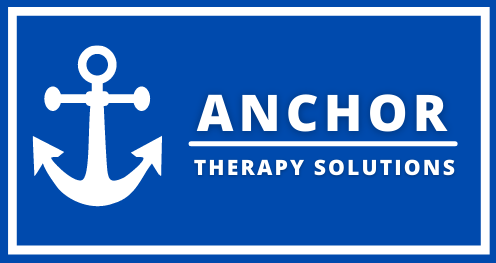Vestibular Disorders
Our occupational therapists have received specialized training in vestibular rehabilitation and have encountered many patients with vestibular disorders throughout our careers. These disorders can significantly impact a person's quality of life and ability to engage in daily activities. In this article, we will discuss what vestibular disorders are, their causes, symptoms, and the role of occupational therapy in their treatment.
The vestibular system is responsible for sensing and providing information about a person's head and body position in space, balance, and coordination. It is located in the inner ear and consists of three semicircular canals, the utricle, and the saccule. When the head moves, the fluid in these structures moves, which activates the hair cells in the inner ear, sending signals to the brain about the movement.
A vestibular disorder occurs when there is a disruption in the functioning of the vestibular system. There are many types of vestibular disorders, including:
Benign Paroxysmal Positional Vertigo (BPPV)
Vestibular neuritis/labyrinthitis
Meniere's disease
Vestibular migraine
Concussion
Ototoxicity
BPPV is the most common vestibular disorder, accounting for approximately 20-30% of all cases. It is caused by small calcium crystals that become dislodged from their usual location in the inner ear and enter one of the semicircular canals. The person may experience brief episodes of vertigo, dizziness, and/or nausea with specific head movements.
Vestibular neuritis and labyrinthitis are caused by inflammation of the vestibular nerve or inner ear. Symptoms include sudden onset vertigo, dizziness, and imbalance, which can last for several days to weeks.
Meniere's disease is a chronic condition characterized by episodes of vertigo, fluctuating hearing loss, tinnitus, and ear pressure. The exact cause of Meniere's disease is unknown, but it is thought to be related to an increase in fluid pressure in the inner ear.
Vestibular migraine is a type of migraine headache that also includes vestibular symptoms, such as vertigo and dizziness.
Concussion is a mild traumatic brain injury that can cause vestibular symptoms, including dizziness, imbalance, and difficulty with eye movements.
Ototoxicity is a side effect of certain medications, such as antibiotics and chemotherapy drugs, which can damage the hair cells in the inner ear, leading to vestibular dysfunction.
Symptoms of Vestibular Disorders
Symptoms of Vestibular Disorders can vary depending on the type of disorder, but common symptoms include dizziness, vertigo (the sensation of spinning), imbalance, and difficulty with eye movements. These symptoms can significantly impact a person's ability to perform daily activities, such as walking, driving, and working.
Occupational Therapist Role
As an occupational therapist, our role in the treatment of vestibular disorders is to assess the person's functional abilities and develop a treatment plan to improve their balance, coordination, and ability to engage in daily activities. Vestibular rehabilitation is a specialized type of therapy that is designed to treat vestibular disorders. It involves exercises and activities that are designed to improve the function of the vestibular system and help the person adapt to their symptoms.
The first step in vestibular rehabilitation is a comprehensive evaluation to assess the person's symptoms, medical history, and functional abilities. This evaluation may include tests to assess the person's balance, coordination, and eye movements. Based on the evaluation, a treatment plan is developed that is tailored to the person's specific needs.
The treatment plan may include a variety of exercises and activities, such as:
Habituation exercises - these exercises are designed to help the person adapt to their symptoms by gradually exposing them to movements that provoke their symptoms.
Balance exercises -are designed to improve a person's ability to maintain their balance and reduce the risk of falls. Examples of balance exercises include standing on one leg, walking on uneven surfaces, and using balance boards.
Gaze stabilization exercises - these exercises are designed to improve a person's ability to keep their eyes focused on a target while their head is moving. This is important for activities such as walking, driving, and reading.
Strength and conditioning exercises - these exercises are designed to improve a person's overall strength and endurance, which can help them perform daily activities with greater ease.
In addition to exercises, vestibular rehabilitation may also include education about the person's condition and how to manage their symptoms. This may include tips on how to avoid triggers that provoke their symptoms, such as bright lights or loud noises.
As an occupational therapist, we also work with the person to identify any environmental modifications or assistive devices that may be helpful in improving their safety and independence. For example, installing grab bars in the bathroom or using a cane or walker for added support.
Vestibular rehabilitation is a highly effective treatment for vestibular disorders, with research showing that it can improve symptoms and functional abilities in up to 80% of cases. However, it is important to note that vestibular rehabilitation is not a one-size-fits-all approach, and treatment plans must be tailored to the individual's specific needs and abilities.
In addition to vestibular rehabilitation, there are other strategies that can be helpful in managing symptoms of vestibular disorders. These include:
Lifestyle modifications - this may include avoiding triggers that provoke symptoms, such as bright lights or loud noises, and making dietary changes to reduce salt intake (which can aggravate symptoms in some cases).
Medication - in some cases, medication may be helpful in managing symptoms of vestibular disorders, such as anti-vertigo medications or anti-nausea medications.
Cognitive-behavioral therapy - this type of therapy can be helpful in managing anxiety and other psychological symptoms that may be associated with vestibular disorders.
In conclusion, vestibular disorders can significantly impact a person's quality of life and ability to engage in daily activities. As an occupational therapist with specialized training in vestibular rehabilitation, we play a crucial role in the treatment of these disorders. By working with the person to develop a tailored treatment plan that includes exercises, education, and environmental modifications, we can help them improve their functional abilities and achieve a greater sense of independence and well-being.


